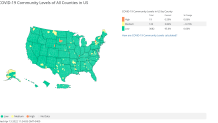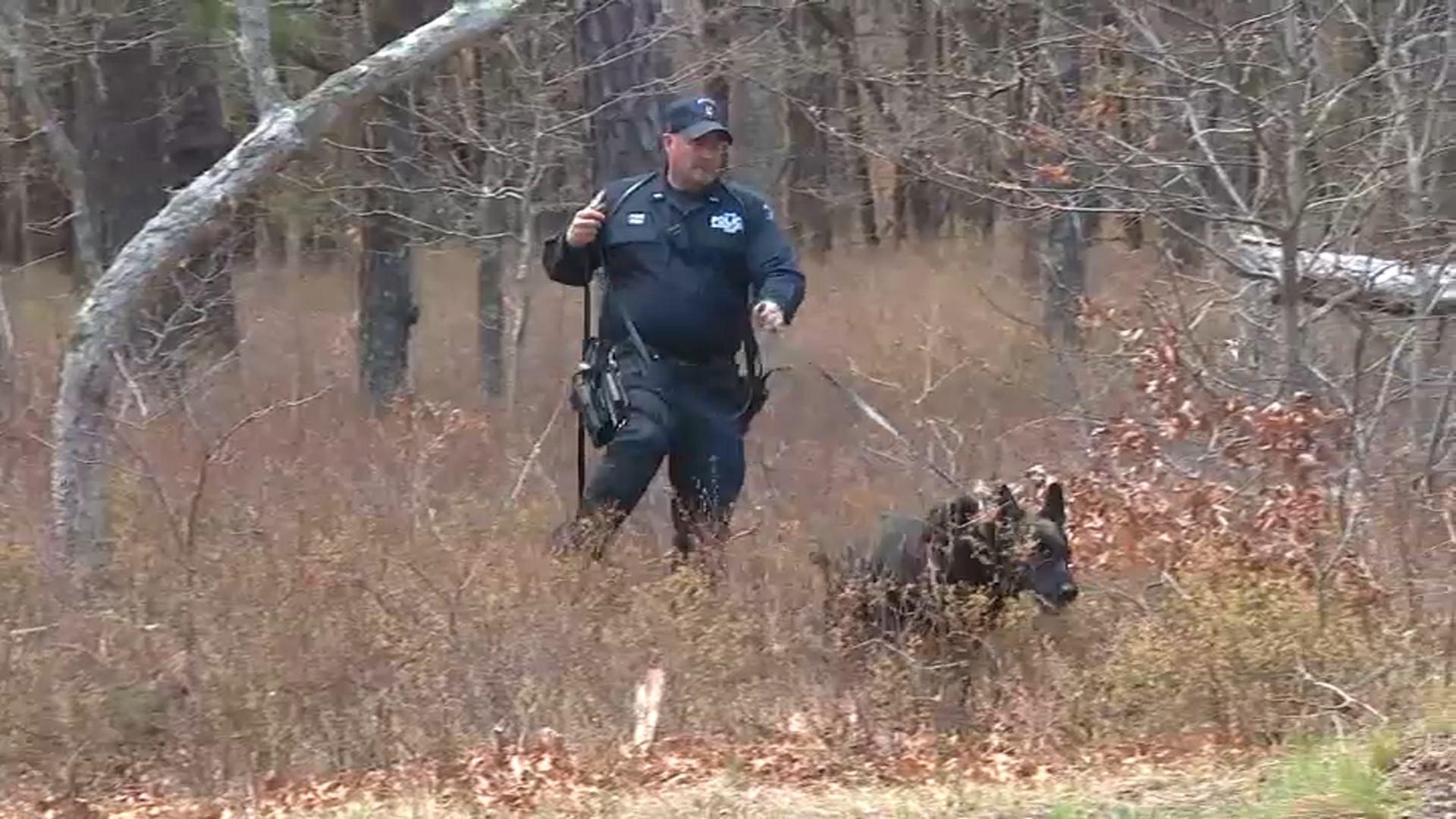What to Know
- According to the CDC, omicron variant, BA.2, now accounts for 84% of COVID circulating in the New York area right now, up from 39% two weeks ago. It's also now the dominant U.S. strain (72.2%)
- New York City's daily case average, meanwhile, is up 39% over the rolling average for the prior four weeks, but COVID hospitalizations and deaths remain on a steady decline as the recovery continues
- Still, the latest case increases are a fraction of what they were during omicron's ascendance and peak in January, which is why officials urge context when assessing the numbers; testing is also slightly up again
The so-called "stealth" omicron variant BA.2, which is fueling a fresh COVID case uptick locally, nationally and abroad, now accounts for more than 92% of virus circulating in the New York region, a significantly higher prevalence than its national share and another marked increase in the last week, according to new CDC data.
It is also driving the vast majority of new infections in New York City, data shows. And Manhattan's transmission rate per 100,000 residents is the highest of all boroughs.
For the CDC's New York area, which for the agency's purposes includes New Jersey, Puerto Rico and the Virgin Islands along with the Empire State, that 92% number is up from 84% last week and 52% two weeks before that.
Get Tri-state area news and weather forecasts to your inbox. Sign up for NBC New York newsletters.
It represents only positive COVID samples that are genetically sequenced to isolate variants, which means the actual prevalence is likely to be much higher, experts say.
New York, for example, has sequenced about 3.43% of all positive samples submitted to labs over the course of the COVID pandemic, CDC data shows. That's a lower percentage than the share among some of the highest-volume case states throughout the crisis like California (5.79%) but higher than Florida (2.54%).
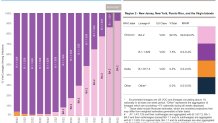
In New York City, health department data puts BA.2 at 85% of positive COVID samples tested, but that data is a week behind that provided by the CDC. Officials say the omicron subvariant now accounts for most cases in the five boroughs.
Just how many cases are attributed to BA.2 may never be known. The city says 13% of all positive samples were sequenced in the latest week of data, a slight drop from the previous week but still trending high compared with earlier this year. It's not clear from the city's health department page how many have been sequenced cumulatively.
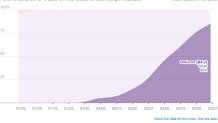
The state also intensely stepped up its variant surveillance efforts before the omicron wave started late last year. New York's breakthrough case rates have seen an uptick in recent weeks, but it's not clear what (or whats) is responsible.
News
The increase could reflect waning vaccine efficacy among some who have yet to be boosted or another cause. Most importantly, the age-adjusted vaccine effectiveness rate in terms of new hospitalizations hasn't shifted in a statistically significant way.
Nationally, less than a half percent of America's nearly 80 million COVID cases to date have been genomically sequenced and made publicly available, CDC data shows, which likely reflects the exhaustive process that work entails.
As of Tuesday's update, BA.2 is about 86% of all national positive COVID samples genomically sequenced in the latest two-week data period, up from 72.2% in the CDC's prior weekly update and from 35% in the one two weeks before that.
BA.2 is said to be inherently more transmissible than the original omicron strain -- perhaps the most contagious form of the virus to date, according to a WHO official -- but has not been scientifically linked to more severe cases or proven to be more vaccine-resistant to this point, which is cause for caution but no alarm, experts say.
Anecdotally, reported symptoms are often exceptionally mild -- like those common with an innocuous cold that wouldn't otherwise lay people out. In the case of BA.2, though, positive tests could last for days, complicating matters for a city -- and a country -- fervently trying to reassert its footing amid the pandemic recovery effort.
The five boroughs' daily case average, meanwhile, is up 38% over the rolling average for the prior four weeks, but reflects only an increase of 521 total cases in terms of raw numbers. COVID hospitalizations and deaths remain on the decline.
Those rolling metrics have dropped by 11% and 60% compared with the averages for the previous four weeks, and while hospitalizations and deaths are known lagging factors, officials say they don't expect any new severe case surge.
Why not? Well, look at the raw numbers. That 60% decline in deaths is the difference between five and two fatalities, and the difference in hospitalizations is three patients (25 vs 28). The latest case highs are markedly below what they were just two months ago, for one. The city's rolling new case rate per 100,000 people of 158.45 is up from 125.84 a week ago but down 95% from the 3,115.97 per 100,000 reported on Jan. 9.
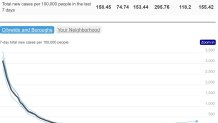
Manhattan has seen the highest transmission jumps in recent weeks, with the borough reporting a rolling case average per 100,000 residents that is 87% higher than the citywide average and the highest of any of the five boroughs.
Manhattan accounts for all but one of the top 10 ZIP codes in terms of rolling percent positivity, according to the latest health department, though Long Island City in Queens leads the pack.
Again, the raw data tells a more complete picture. In the Long Island City ZIP code with the city's highest rolling positivity rate right now, it's a 27-case increase. In TriBeca, No. 2 on that metric, it's a 29-case difference -- and just 12 for the Financial District's 10004.
NYC Rolling Percent Positivity by ZIP Code
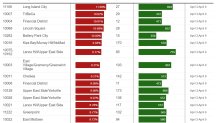
Ultimately, officials say BA.2's dominance was expected and it's expected that some other COVID variant will take its turn, too. That doesn't necessarily exacerbate community risk. In the city, the alert level is still "low." It doesn't get any lower.
Nationally, just 19 of America's more than 3,200 counties are considered "high" risk by the CDC, based on its recently debuted community level threat tracker. More than 95% of U.S. counties, including all five in New York City and the entire states of neighboring New Jersey and Connecticut, are considered low risk as well.
Parts of Central New York, though, like Onondaga and Cayuga counties, are now in the CDC's high-risk zone and some surrounding areas have turned yellow recently. New York's Department of Health on Wednesday announced the emergence of new subvariants of BA.2 which officials believe have fueled the sharp increase in Central New York and the surrounding areas.
Data from March in those regions shows that the two subvariants (BA.2.12 and BA.2.12.1) were prevalent in more than 70 percent of cases in Central New York. In April, the rate has shot up to more than 90 percent of cases — making the findings the first reported instances of significant community spread caused by the new subvariants in the U.S.
Given the upticks, the feds plan to extend the nationwide travel mask mandate another two weeks at least, sources with knowledge of the decision said on Wednesday.
Though infections are rising, most counties still have low levels of transmission and hospitalizations, which means people who live in those areas don't need to wear masks indoors under CDC public health guidance.
Dr. Anthony Fauci said this week COVID will continue to circulate in communities for the foreseeable future, and people will have to make their own decisions about the risk they're willing to take based on their age and health status.
